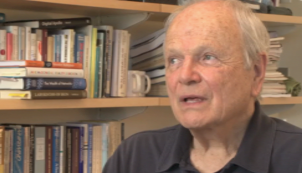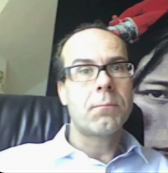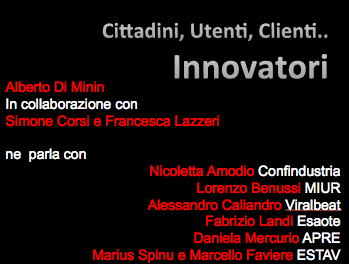Florence, May 8th. One of the nice aspects of my job is that from time to time I can take a step back, and learn something new and interesting. Those of you who know my work, might link me to the field of open innovation and appropriability… and please continue to do so! But in the recent months, after the nice User Innovation workshop in Harvard, I got very curious on User Innovation. I think these two areas are quite compatible and offer two very important theoretical point of views (one coming from the West Coast: Teece+Chesbrough) and a second one based on the East Coast (Eric von Hippel).
The opportunity to discuss about User Innovation in an unconventional-not-strictly-academic context arrived as I was invited by Metropoli (an agency of the Florence Chamber of Commerce) to organize and chair a panel discussion on precisely this topic.
To do so I used the same format I implemented when interviewing Alessandro Baricco & Edoardo Nesi for CNA Next in 2010 in Torino. Thanks to my students Simone Corsi and Francesca Lazzeri I was able to interview at the very last minute Eric von Hippel and Frank Piller, and include in my presentation pieces of theory and examples coming directly from two of the main gurus on the subject.
Taking part to this conversation were:

Eric von Hippel (MIT), the Father of User Innovation featured in the course of the conversation with a video contribution
Nicoletta Amodio Confindustria
Lorenzo Benussi MIUR
Alessandro Caliandro Viralbeat
Fabrizio Landi Esaote
Daniela Mercurio APRE
Marius Spinu e Marcello Faviere ESTAV
From their perspectives of managers, entrepreneurs, and policy makers they helped me set the stage and position User Innovation in Italy. We struggled to identify clear examples of “users DONE” innovation in Italy, and to be honest I have to report some skepticism on the whole idea that companies are geared to think and act on ideas that come from the aggregation of suggestions and creativity of users and users’ communities.

Frank Piller (Aachen University) is one of the key scholars of User Innovation in Europe, he consulted with many companies and government organizations
Still, we got the ball rolling, and the animated discussion left the audience with some ideas to take home with. My main thought is that we need to be more compelling in expressing our view on the user innovation dynamics, and examples of competitions and communities that work are the way to win resistance over this context.
Also, some of the people present in Florence commented that we need to move beyond the perception that users get involved with a geeky attitude and a game-playing mentality. Yes problem solving is fun, but my dear entrepreneurs and community managers, there are a lot of fun activities out there, and if you get your users’ energy and time on your projects then it is clear that you have a great responsibility to engage these people in the right way, getting them involved and clearly identify what’s in it for them.
I replicated this presentation in the course of the EIT-ICT Lab Master program in Trento, and I used together with Andrea Paraboschi the case of BlaBlaCar (which has already featured in one of my La Repubblica pieces).

